How To Repair Clay Pottery
Breaking a cherished piece of pottery that has been in the family for generations can be devastating. Even if it's a brand-new piece or something you just pulled out of the kiln and dropped to the floor, the feeling is no different.
Can pottery be repaired? Most pottery that was broken can be fixed! If you have all the pieces and a high-quality adhesive, you can put it back together. Repairing pottery requires high-quality ceramics glue. In cases with valuable pottery, you may want to take it to a professional.
Don't worry, all is not lost. As long as your piece of pottery isn't smashed into teeny tiny pieces, your piece can usually be repaired so long as you have the right kind of adhesive. Follow along as I show you the tools and the exact steps involved for proper pottery repair.
Affiliate Disclaimer: We are ambassadors or affiliates for many of the brands we reference on the website. As an Amazon Associate, I earn from qualifying purchases.
How to Choose the Best Pottery Glue
We'd first like to look at the repair process with pottery: the adhesive. The adhesive you use depends on the type of project you set for yourself.
For example, if you wanted to repair an art piece, such as terra cotta, you need epoxy.
On the other hand, pottery that you plan to eat off of should have a label on the adhesive that says food safe. Not only does it protect you when eating, but food-safe adhesives can handle the daily dishwashing routine.
You choose ceramics glue based on the purpose of your pottery. Look at the purpose and look for a ceramic glue that says it can repair it. Is your pottery decorative or dinnerware?
Broken Made New: The Art of Kintsugi
The Japanese even made repairing pottery an art form. Some people who practice the sublime art of Kintsugi will purposely drop their ceramics on the floor deliberately just so that they can repair it.
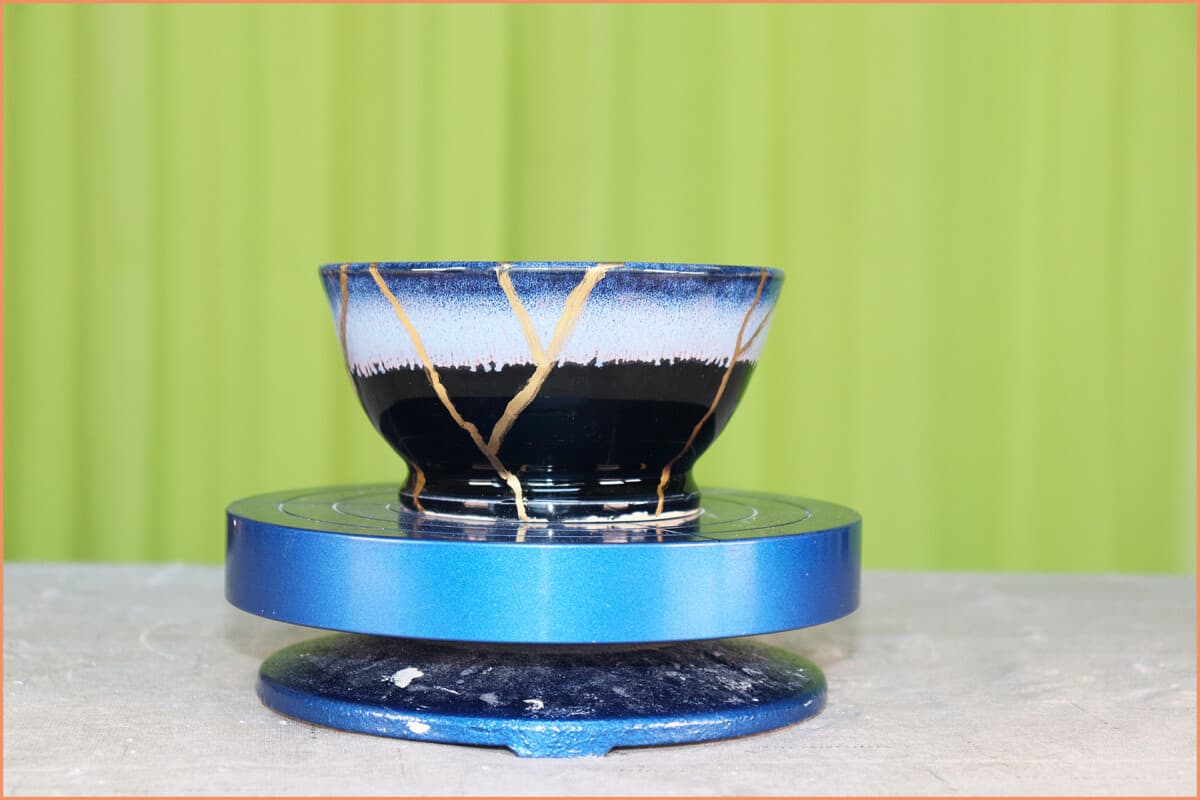
Once they have broken the pottery, the practitioner takes silver, gold, platinum, or lacquer to repair the broken pieces of pottery. Kintsugi's beautiful message is to embrace the imperfect as part of the character of the piece.
Rather than disguising the breaks as unsightly, this becomes the character and history of the piece. This longstanding tradition in Japan originally began with lacquerware.
Modern-day potters have even begun to experiment with it and the art has had an influence that you even see at the Herbert F. Johnson Museum of Art and the Smithsonian.
Most Common Types of Glue for Repairing Pottery
The most common types of glue to repair your pottery are superglue, clear glue, and epoxy. They have their pros and cons, so it's important that you know the difference before deciding on which one to use in a particular situation.
Superglue or Clear Glue
Superglue and Clear glue are very similar. You may have mixed opinions about the use of these for repairing ceramics—some potters use them and some see it as a cheap and ineffective fix. Like an adhesive, they dry in 10 minutes and cure in 24 hours.
The speed of the repair has made them popular, but some potters dislike superglue because a thin layer of film needs to be placed between the two parts for proper bonding. Superglue doesn't fill the void as easily as epoxy.
To repair pottery with superglue or clear glue, apply a generous amount. This helps it stick. The glue will adhere for a very long time, but high temperatures can destroy the bond. In as little as 180 degrees Fahrenheit, superglue and clear glue can come off.
That makes them a poor choice for food. Depending on the epoxy, they fail at temperatures between 200 to 400 degrees Fahrenheit.
Superglues have value in cases with ceramics where you won't handle the item much. It also works well for lightweight ceramics. Most superglues are water-resistant and could handle being washed once or twice.
Pros
- Dries fast
- Good choice for items with little handling
- Most are water-resistant
- Cheaper than using epoxy
- Offers you a quick fix
Cons
- Not as strong as epoxy
- If you don't apply enough pressure when bonding the object together, it could come apart again later
Epoxy
Think of superglue as a quick-fix solution, but don't think of it as one to absolutely fix the problem. Epoxy, on the other hand, acts as a gap filler, making it the perfect choice for ceramics. Epoxy fills in the gaps and creates a strong bond with the shattered pieces. It may cost more, but you will have a lasting solution.
Expect to wait several days for the epoxy to fully cure. It may dry in 12 hours, but you wouldn't want to use it for anything other than light use at the 24-hour mark.
Beware not to clamp epoxy too hard, or it can be squeezed out of the gaps in the ceramic. Stronger epoxies can hide the flaws in the broken ceramic piece.
While we discussed repairing pottery with Kintsugi and putting the flaws on full display, you may not always want to do that unless you want a Kintsugi-style piece. Stronger epoxies, regardless of color, hide the repair lines much easier.
You need more effort to repair with epoxy, but the results are long-lasting and they give it more durability compared to superglue.
Pros
- Acts as a good gap filler
- Repairs last longer than with superglue
- Intended more for quality pieces
- Hides the repair lines better
- Much stronger solution than superglue
- More durable than superglue
Cons
- Takes longer to set
- Some epoxy's have strong toxic fumes
- Requires more effort
- Resin may yellow from UV rays
In general, both work well for small cracks in pottery but not large ones. Superglue is great for repairing chips or nicks in clay pots, while Epoxy is better suited for larger repairs, such as broken handles or shattered pieces of pottery.
The Importance of a Precision Applicator Tip on Pottery
You may not think of the shape of the container as influencing your pottery repairs, but pay close attention to the shape. Being able to drip ceramic adhesives from the container will make the repairs easier.
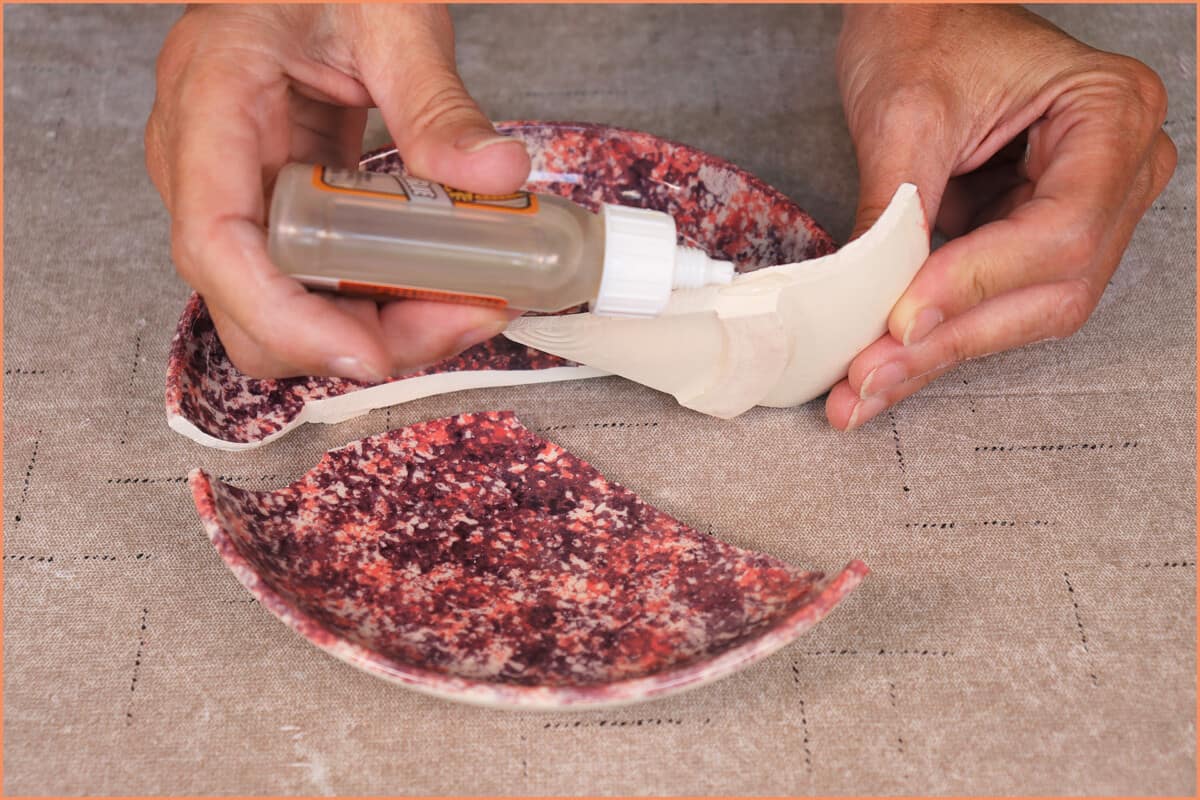
Watch for one with a Precision Applicator Tip. You can apply adhesive more easily with a Precision Applicator Tip, and it will have better accuracy. Some manufacturers, however, will give you a brush instead, which lets you apply the adhesive with greater thickness and hands you greater control over the application.
Repairing Your Pottery: Step One
After you picked out the glue for your application, you should understand what you will need:
- Epoxy, Superglue, or Clear Glue
- Wooden stick
- Razorblade
- Clay
- Paper pad
- 91% alcohol
- Rag
- Dremel EZ Lock Sanding Disk
Put on your safety glasses beforehand because you shouldn't repair pottery without safety glasses.
Step Two: Prepping the Pottery
To begin, clean away any dirt or debris on the pottery. This will keep the dirt from interfering with the bond. Clean it with alcohol and match the broken pieces for alignment. Here, you will use a small box of sand or rice to hold the shards in place. Before you apply the glue, ensure that everything aligns correctly.
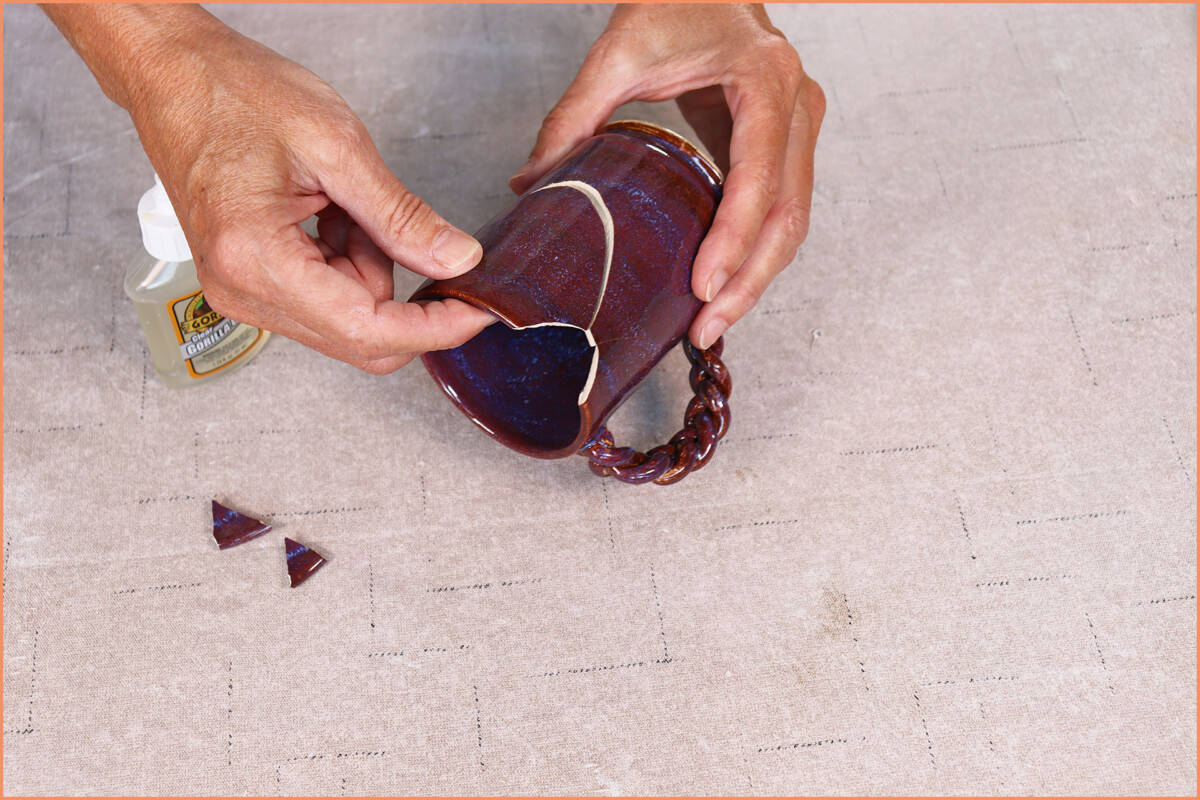
This shortens the process later because you can implement your repair without having to think about it.
Step Three: Mix and Add the Adhesive
If you have epoxy, you need to mix it. Superglue doesn't require mixing. With epoxy, however, you have to apply it to a pad of paper to mix it. Mix it thoroughly to ensure that you get a proper cure with the epoxy.
Using the wooden stick, you will mix the epoxy on one side.
Step Four: Align the Broken Ceramics
After you have mixed the epoxy, you will take the broken pieces from the pottery and put them back together. Squeeze them until you see excess glue. Don't squeeze too hard because you want this to stick and fill the gaps of the broken ceramic piece.
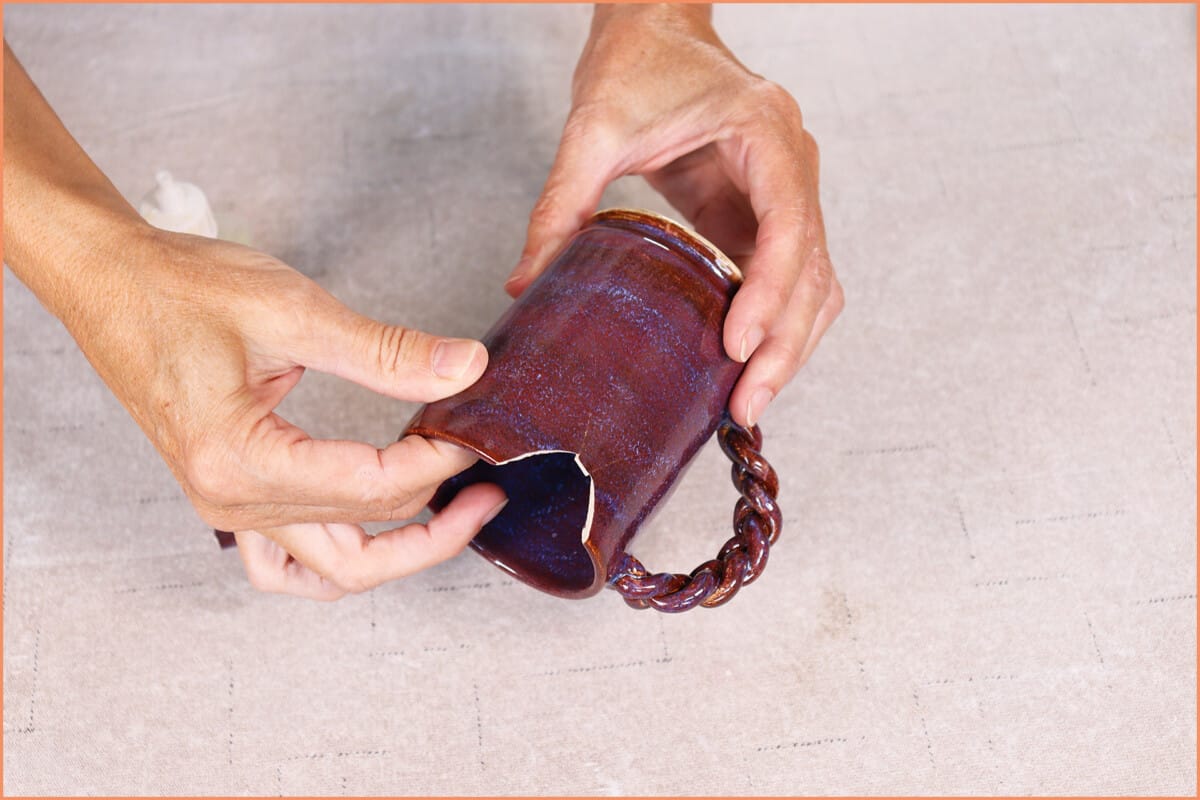
Don't wipe anything away because you don't want it to smear. Wiping away the excess epoxy happens after it has been cured. Wait a minimum of 20 minutes before you continue with the next broken shard. You will keep adding pieces until you have put together the entire broken ceramic piece.
Step Five: Letting it Cure
Before you let the ceramic piece cure, you first want to check to see that it will remain in a sturdy position. You want them to cure in the same place you put them.
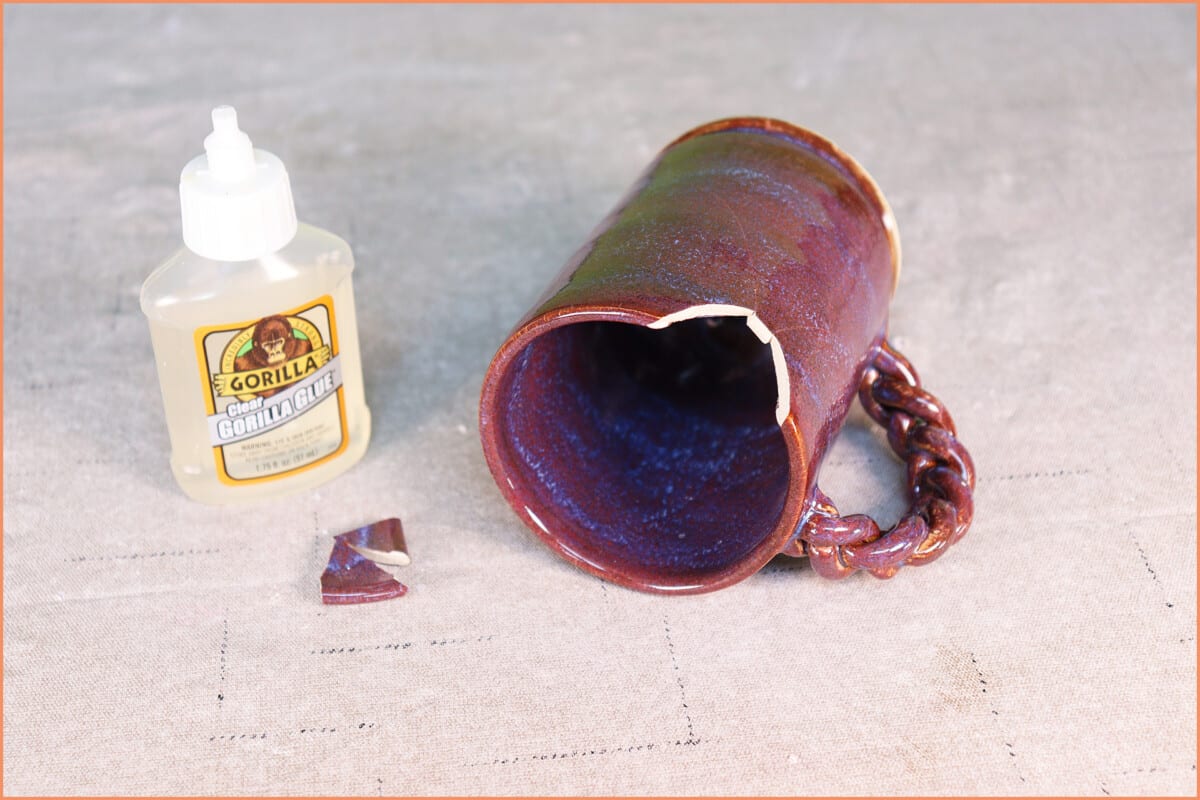
Holding them in place for hours isn't practical or accurate, so working in a room that is around 75 degrees Fahrenheit will help the ceramic piece cure more quickly. For a quicker curing time, set your piece in the sun.
How to Remove a Break Line in your Pottery
After your piece cures, we have to remove the chips, cracks, and visible break lines.

In doing this, we will be talking about non-porous materials like stoneware, porcelain, glass, and resin. The process differs from porous materials; you will need epoxy for that.
Remove the dust from the pottery using a 91% alcohol solution. Add the thin layer of filler for the cracks and missing shards. Wait until this cures at the 24-hour mark.
Once it cures, use 120-grit sandpaper to sand the break line using a Rotary Tool with Sanding Disk. Wear Safety Glasses when doing this.
Low speeds on the sander work best to keep from burning your ceramic piece. You can also hand sand it. Instead of 120-grit sandpaper, however, use 220 grit, and you will continue by finishing with 400-grit sandpaper.
Once you think you are finished, inspect the piece for cracks. If you spot any cracks, continue sanding. Clean your piece again with the 91% alcohol solution to prepare it for painting or glazing over the breaks.
How do I fix my pottery?
To fix your pottery, begin by doing a dry fit. This shows you how to put it together once you have the epoxy. Once you have the two-part epoxy, you will put it down on a paper pad and mix them together. For the next step, put it around the broken edges of the pottery. You only have to apply it to one of the broken edges to keep from excess epoxy.
Can chipped pottery be repaired?
By using two-part epoxy, you can repair the chips in your ceramics. The epoxy acts as a putty to fill the gaps in your ceramics. Dry times with epoxy vary based on the resin used, but you can expect it to take several days to fully cure.
Can broken pottery be glued?
Using Superglue, Epoxy, or Clear Glue take the shattered pieces of your pottery to glue around the edges. You only need to apply glue to one of the sides to repair your pottery.

Epoxy will work best because of how it can fill in the gaps from missing pieces too small to recover. Wear gloves when gluing it back together because broken ceramic can be sharp.
How do you fix a broken ceramic vase?
The clear two-part Epoxy works best when repairing a broken vase. Take the broken pieces and apply the glue around the edges of the shattered pieces. Fast-drying epoxies aren't advised if you want a precise fit. Make sure to use the right acrylic paint to match the repairs of the vase. Finding the right paint to match your ceramic vase takes time and research.
Conclusion
You can repair pottery, and fairly easily too. You do have cases where you couldn't repair it because of too much damage. You can either choose to repair it yourself, or you can take it to someone experienced in pottery repair for professional results. If you're dealing with generational dishes within the family or a cherished family heirloom, you may want to have a professional repair it so that you know it has been repaired the right way.
How To Repair Clay Pottery
Source: https://potterycrafters.com/can-broken-pottery-be-repaired/
Posted by: baisdenbefer1961.blogspot.com

0 Response to "How To Repair Clay Pottery"
Post a Comment